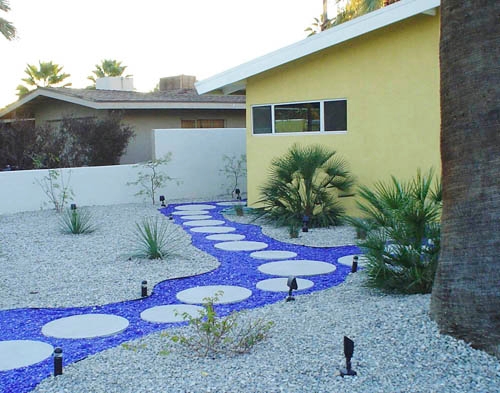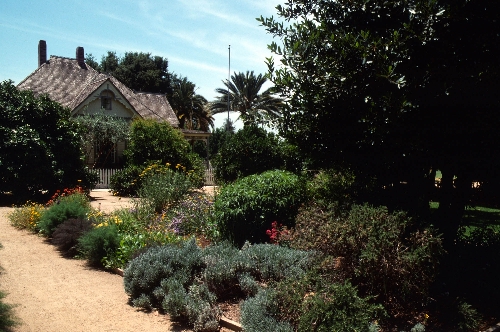In lieu of lawns



The problem with green politics is that everyone complains, but viable alternatives are few and far between. While everyone wants to eliminate resource-consuming lawns, no one discusses good green-lawn substitutes.
Smart design is needed when reconsidering the space once covered by a lawn. The challenge is balancing your needs and those of the environment. Some folks can do this all by themselves; others may need to call in a designer.
Do-it-yourselfers should remember that you can walk across a lawn to get to various parts of the yard. So if the new plan is to be functional, you must respect the old connections you and your family are used to. For example, plopping a food garden in conflict with the direct path to the garage means that you have to move around it every time you go to or from the car. While you may be willing to walk around, it’s more difficult to change set patterns.
The first and most important rule of rethinking lawn space is to make these necessary connections in a logical way. This means getting from Point A to Point B in as short and direct a manner as you can manage. These are the go-to pathways that link the back door to the garage, the front yard to the side yard or the pool enclosure to the nearest bathroom. These are connections you must preserve, and such links must also be surfaced for use in all seasons. Designers call this site circulation.
How you lay out the connecting walkways and paths also influences the size and configuration of the remaining open spaces. If that vegetable garden must go where it interferes with the connection to the garage, then it’s best split into two major spaces divided by a walkway. This solves the connection problem while retaining your desired use for the space.
The newly created spaces should blend into the style of your existing landscape. If the landscape is soft, natural and curvy, then your connections should be laid out that way, too. If you have a rectilinear landscape such as a colonial layout or something ultramodern, then the connections and their adjacent spaces should be more geometric in form as well.
Next, the resulting spaces should be treated in two fundamental ways: planted or fallow. A fallow piece of ground is neither planted nor irrigated. These are the ultimate low-maintenance solutions. They can be paved, which is expensive, but divides the soil from the atmosphere by an impermeable surface that creates runoff. Fallow ground may be more inexpensively treated with a mulch layer that sits on top to discourage weeds from growing. This mulch is porous enough to allow rainwater to saturate the soil underneath and recharge groundwater. Mulches made of locally sourced materials are best because little fuel is required to transport them.
The fun comes when you consider how to plant the spaces. This will be a balance between practical and aesthetic. A practical choice might be orchard trees or food, herb or flower gardens. An aesthetic approach may include planting with native perennials or creating a Mediterranean-style garden to conserve water. If you miss the grass, perhaps a meadow with drought-resistant ornamentals or native grasses blended with compatible perennials make greener alternatives.
If you plan to retire the lawn, don’t rush the process. Take time to design it properly. Strive to make every part of the garden beautiful or productive. Avoid high-maintenance situations. Never forget that it costs the same to create a poorly thought out landscape as it does a well-designed backyard space.
Maureen Gilmer is a horticulturist. Her blog, the MoZone, offers ideas for cash-strapped families. Read the blog at www.MoPlants.com/blog. E-mail her at mogilmer@yahoo.com.












